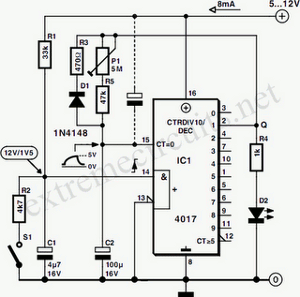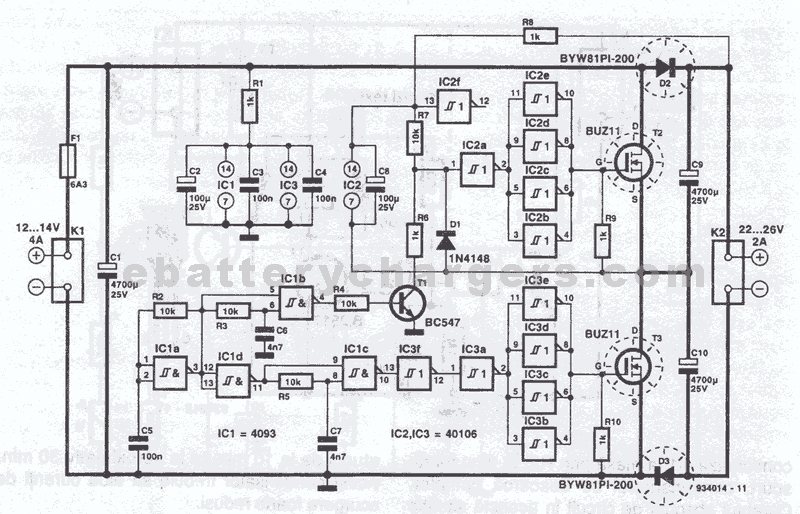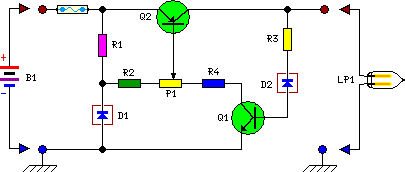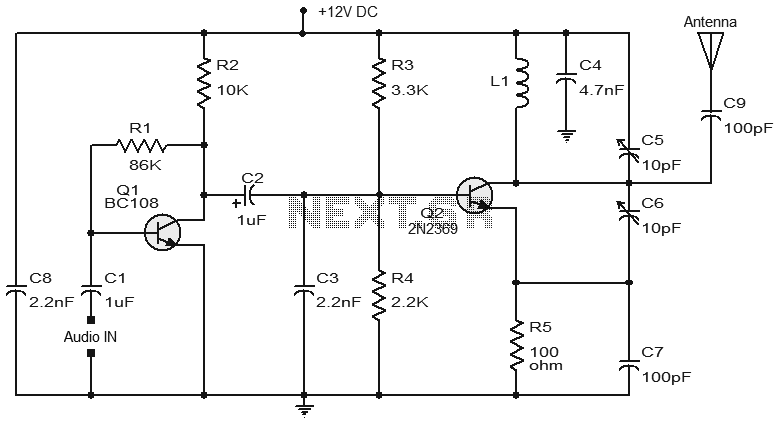
4017 IC For Flip-Flop Timer Circuit DIagram

This circuit illustrates a flip-flop timer circuit diagram utilizing the 4017 integrated circuit (IC). The key feature includes a push-button switch (S1) that discharges capacitor (C1) through resistor (R2).
The 4017 decade counter IC is commonly used in timer and counting applications. In this circuit, the 4017 is configured to operate as a flip-flop timer. The push-button switch (S1) serves as the trigger mechanism for initiating the timing sequence. When pressed, S1 allows capacitor (C1) to discharge through resistor (R2), creating a timing interval based on the RC time constant defined by the values of R2 and C1.
The output of the 4017 IC can be connected to various load devices, such as LEDs or relays, to indicate the timing intervals visually or to control other electronic components. The timing can be adjusted by changing the values of R2 and C1, allowing for flexibility in the duration of the timer.
Additionally, the circuit may include other components such as diodes for protection against reverse polarity, or additional resistors to fine-tune the timing characteristics. The design ensures that the circuit operates reliably and provides a clear indication of the timing cycle through the output states of the 4017 IC.This circuit shows about 4017 IC For Flip-Flop Timer Circuit DIagram. Features: Push-button S1 will discharge capacitor C1 through R2. Component: .. 🔗 External reference
The 4017 decade counter IC is commonly used in timer and counting applications. In this circuit, the 4017 is configured to operate as a flip-flop timer. The push-button switch (S1) serves as the trigger mechanism for initiating the timing sequence. When pressed, S1 allows capacitor (C1) to discharge through resistor (R2), creating a timing interval based on the RC time constant defined by the values of R2 and C1.
The output of the 4017 IC can be connected to various load devices, such as LEDs or relays, to indicate the timing intervals visually or to control other electronic components. The timing can be adjusted by changing the values of R2 and C1, allowing for flexibility in the duration of the timer.
Additionally, the circuit may include other components such as diodes for protection against reverse polarity, or additional resistors to fine-tune the timing characteristics. The design ensures that the circuit operates reliably and provides a clear indication of the timing cycle through the output states of the 4017 IC.This circuit shows about 4017 IC For Flip-Flop Timer Circuit DIagram. Features: Push-button S1 will discharge capacitor C1 through R2. Component: .. 🔗 External reference





